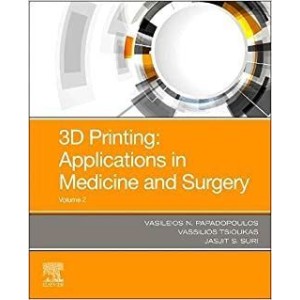Principles and Practice of Surgery
- Εκδόσεις: Elsevier
- Συγγραφέας: O. James Garden, Stephen J. Wigmore, Rowan W Parks,
- Κωδικός Προϊόντος: 9780702082511
- ISBN: 9780702082511
- Διαθεσιμότητα: 10-12 ημέρες
- 63,60€
- Χωρίς ΦΠΑ: 60,00€
This comprehensive textbook is the surgical companion to the international bestseller, Davidson’s Principles and Practice of Medicine. It provides an overview of core surgical topics encountered in an integrated medical curriculum and, later, in the clinical setting. The book takes a succinct and practical approach to the understanding of surgical disease and care of the surgical patient. It offers comprehensive coverage of the key surgical specialties and includes emerging issues around patient safety and the critical importance of clinical human factors in surgical practice. Fully updated to reflect changes in understanding and evidence-based practice, this is a text that keeps the student up to date and that no trainee surgeon should be without.
- Easy to read, logical to follow
- Summary boxes and evidence boxes throughout to complement the text
- Superbly presented with line drawings, high quality radiographic images and colour photographs to help in exams and in the clinical setting.
- Aligned with undergraduate and postgraduate surgical curricula
- New chapters on professional and ethical responsibilities, global surgery, patient safety and clinical human factors
- Comprehensive information on global surgical practice
- Full online and eBook version available as part of Student Consult
ΠΕΡΙΕΧΟΜΕΝΑ:
https://www.zevelekakis.gr/image/catalog/periexomena/Principles and Practice of Surgery.pdf
| ΛΟΙΠΑ ΣΤΟΙΧΕΙΑ | |
| Έκδοση | 8th |
| Εξώφυλλο | Μαλακό |
| Ημ. Έκδοσης | 2022 |
| Σελίδες | 584 |
Ετικέτες: Garden, Parks, Wigmore









